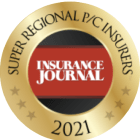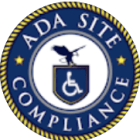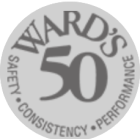
Experience the unmatched thrill of hitting the road on your motorcycle without worries. Here are some tips that will help you have more enjoyable trips, enabling you to proactively avoid any potential dangers that may arise along your route.
Before riding your bike, it’s important to thoroughly verify its condition, brakes, tires, lights, and other essential parts. You can use a digital vehicle inspection checklist to ensure you don’t miss anything.
Don’t overlook the importance of regular bike maintenance; it is another way to take care of your safety and keep your motorcycle in optimal condition for your next ride. This includes maintaining tire inflation and periodically checking the engine chain/belt, suspension, lights, and oil/fluids. Finally, another tip that can save you time is to ensure that you have enough fuel to get to your destination to avoid problems like running out of gas halfway.
Being one step ahead regarding road safety means wearing proper protective gear. The clothing and additional elements you decide to wear when taking your bike for a ride play a vital role as they can help you have a safe trip, without setbacks, and can even prevent crashes in some cases.
When it comes to taking precautions when driving, your clothing and the items you use can be a turning point in your favor. For instance, wearing a helmet is not only recommended but even mandatory in many states, as it protects your head from suffering brain damage and other serious injuries if you hit a rough surface or end up unconscious due to a crash. In addition, wearing an anti-reflective vest will make it easier for other drivers to spot you, especially when riding at night, as it improves visibility on the route, so there is less chance of having a collision. Finally, don’t forget to wear gloves and boots as these are designed to give you a better grip and a non-slip effect that will help you stay firm on your bike, thus avoiding slipping and falling or losing control of your bike.
The sad truth is that many collisions involving motorcycles happen because car drivers fail to notice motorcyclists on the route. That’s why you may have heard the saying “ride defensively,” which means, to be careful when you ride among other vehicles and always try to be aware of blind spots.
The goal is that you effectively avoid getting caught in a situation where your presence goes unnoticed by other vehicles on the road, as this puts you in a vulnerable situation where you don’t know when other drivers may turn, stop, or accelerate quickly and end up crashing into you.
The weather is another factor that can significantly impact your ride. Riding a motorcycle on a sunny day when the pavement is dry is completely different from doing it during a storm or heavy rain when the street surface becomes wet and slippery, which poses greater challenges for you as a rider.
Considering the weather before embarking on a journey will enable you to take specific precautions and ensure a safe arrival at your destination. For example, if it’s raining, you may need to adjust your speed and be cautious around turns. Also, your motorcycle’s tires should have adequate tread depth to maintain traction in wet conditions. A good way to be aware of the sky conditions is to check the weather app on your phone before starting your trip.
Safe driving and responsible behavior go hand in hand, which means not only thinking of your own safety or that of your motorcycle but also helping to minimize risks every time you ride on the street and following good practices to create a secure driving environment for everybody.
One important rule is maintaining a safe distance from other vehicles. This distance provides you with enough time and space to react to any sudden changes in traffic. Another crucial rule is to reduce your speed when approaching curves on the route as curves can be deceptive, and taking them at high speeds increases the chances of losing control and veering off the road. And something that you should avoid is making any dangerous maneuvers that could endanger yourself or others.
Considering the factors listed above will help you have a hassle-free journey. By adhering to safety rules when riding your bike, you contribute to a more secure riding environment for everyone, since you’re showing that you prioritize your well-being and that of others over the thrill of speed and adrenaline.
However, keep in mind that the best way to take care of your motorcycle is by getting Motorcycle Insurance that protects both you and your bike, either to provide you with financial support in the event of an accident or to help you pay claims and even additional expenses related to other situations.
Ready to explore your insurance options?
Start a quote today and let us help you find the coverage that best suits your needs.
Get monthly news and useful insights by subscribing to our monthly newsletter.
By submitting this form you confirm that you agree to PSIC’s privacy policy.

With more than 40 years of trajectory, we have the expertise to accompany you in every stage of your life.
5515 E. La Palma Ave. Ste. 150, Anaheim, CA 92807



Copyright © McGraw Insurance Services, L.P., Delaware L.P., 5515 E. La Palma Ave. Ste. 150, Anaheim, CA 92807, License 0K06900 / National Producer No. 17486061 The insurance policy, not the contents of this website, forms the contract between the insured and the insurance company. The policy may contain limits, exclusions and limitations that are not detailed on this website. Coverage may differ by state.
Privacy Notice at Collection for CA employees
Last updated: June 27, 2023
We take the privacy of our employees and applicants very seriously. Please read this notice carefully as it contains important information on the personal information that we collect, why we collect it, how long we keep it, and that it is not sold to third parties.
Other terms used but not defined will have the meaning set forth in the CCPA, as amended by the CPRA, Cal. Civ. Code §§ 1798.100—1798.199.100, and accompanying regulations set forth under Cal. Code Regs. tit. 11, § 7000 et seq.
Categories of Personal Information Collected
Purposes for Collecting and Using Your Personal Information
Managing Human Resource Functions:
Conducting business operations:
Monitoring:
Compliance with:
Investigating:
We will not retain your personal information for longer than necessary for the purposes set out in this notice. Different retention periods apply for different types of personal information.
When it is no longer necessary to retain your personal information, we will delete or anonymize it.